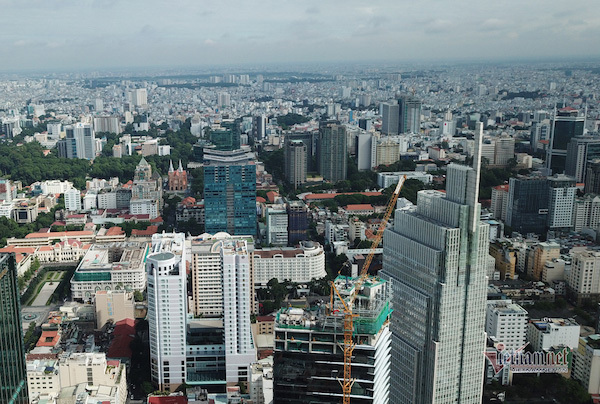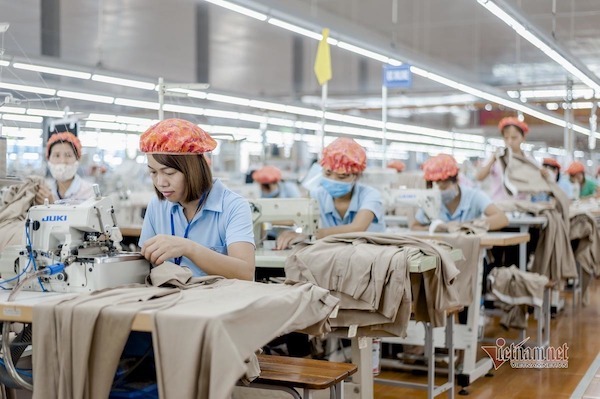Reporting to the National Assembly, Prime Minister Pham Minh Chinh affirmed that one of the solutions is to prioritize building and improving institutions and organizing law enforcement, focusing on solving difficulties and reforming administrative procedures, and improving the business investment environment.
In addition, it is to carry out substantive and more effective restructuring of the economy in association with innovating the growth model, raising productivity, quality, efficiency and competitiveness, and developing digital economy and digital society.
He emphasized that the Government is committed to speeding up the construction and development of a modern strategic infrastructure system, especially in transport, energy, digital infrastructure, agricultural and rural infrastructure, and climate change response; and taking public investment to lead and activate social investment, especially the public-private partnership method.
These are just some of the 12 groups of solutions that the Government has set out to fulfill next year's socio-economic targets amid the context that the pandemic is still threatening the economy and people's health.
More drastic solutions
 |
|
|
In the context that the Government is discussing development indicators, a consultation on reform with a focus and roadmap to 2025 was held recently by the Central Institute for Economic Management (CIEM).
Tran Thi Hong Minh, Director of CIEM, stated that Vietnam’s economic context in 2021 is complicated. Many international organizations have taken a more cautious view of Vietnam's economic development prospects. The World Bank's updated report estimates Vietnam’s GDP this year at between 2.0% and 2.5%, significantly lower than the 4.8% forecast released in August. The figure will be 3.78%, according to the International Monetary Fund’s forecast.
She said that in some areas, reform may have "reached the institutional ceiling", so it is difficult to create more breakthroughs without more drastic solutions. In that context, thinking about national renewal in a modern way is even more necessary to support reforms.
Nguyen Anh Duong, Head of CIEM’s General Research Department, said the economy is facing risks and serious consequences. He agreed with Minh’s concern that reform may have "reached the institutional ceiling".
5 groups of problems must be addressed
In order to accelerate economic recovery and reform towards sustainable development in the 2021-2025 period, Duong said that Vietnam needs to answer five important questions.
Firstly, some experts proposed that the government have fiscal and monetary policies to support the economy that has had slow growth. He said: “However, the interaction between macroeconomic policy tools and economic institutional reform is not discussed thoroughly. Will the use of these packages reduce interest in economic institutional reform?”
Secondly, resources for economic recovery and development are an important content. There are still many resources in the people, and what mechanism is there to motivate people to invest in production and business? The role of public investment is still very important, but how should it be used effectively without affecting other sources of investment?
Thirdly, how should space for new economic activities be opened in a sustainable way such as the digital economy, circular economy, sharing economy? How should policies be developed, together with awareness and determination, in ministries, agencies and localities?
 |
In particular, new economic activities pose many unprecedented problems, so what approach and principles should be followed to promote coordination between ministries?
Fourthly, in the period of 2021-2025, how should momentum be created for institutional reform towards good international practices, in the context that integration, recovery and sustainable development are important requirements?
Fifthly, improving internal capacity in general and the private sector is necessary, but what conditions are needed to ensure transparency and avoid distortions in resource allocation? How can Vietnamese enterprises more effectively manage risks in the supply chain, especially in the post-Covid-19 period, while still strengthening their capacity to participate more deeply in global and regional value chains?
Change of mind
 |
Dr. Vo Tri Thanh said that Vietnam needs to prioritize digital transformation, but to have a digital economy the country must have a database and laws on databases. In addition, reform solutions must create a long-term impact, promote innovation and be breakthrough solutions.
“It is important to change the mindset. We should not just limit ourselves to the old thinking. Vietnam needs to go with the world, not follow or catch up with it,” Dr. Thanh said.
Economist Pham Chi Lan noted that we have not only disrupted the supply chain but also work coordination and the working relationship between the central and local governments.
“Reform must go hand in hand with recovery. Without reform, it is impossible to recover," Lan noted.
Dr. Can Van Luc, Chief Economist of the Bank for Investment and Development of Vietnam (BIDV), said that the quality of legal documents is not high, the consistency is still low, and the vitality and durability of the policy is also a weakness. Issuing of instructions for policy implementation is slow, while the execution is inefficient. This is the bottleneck pointed out by foreign investors.
Dr. Luc said: "If we are not determined to reform drastically, we will fall behind and miss the pace of development."
Tu Hoang

Business environment reform: drastic and consistent
After several years using the World Bank Ease of Doing Business report as a measurement, Vietnam's business environment has made great strides.

Reform lessons: when ministries, branches take decisive action
Maintaining a high ranking and improving electricity access scores continue to be the mission of the reform program.